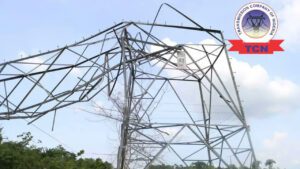
Technical Know how on mechanised agriculture
Discourse over agriculture in Nigeria largely draws arrays of subjects which are, by and large, topics of interest to stakeholders and experts in the field. While there are subjects which are known to be of generalised reflections in the sector, many of which are known to the majority, it is apparent that there are more specific components knitted to these subjects which may not be too glaring to the layman. Hence, the workings of the sector on its own, is embodied with subjects which have been engrafted with attachments which though may be subtle, but yet essential as growth and development factors in the sector.
Subjects relating to the impacts of the outputs of the sector viz-a-viz the socio-economic character and well-being of the population are issues of serious concern. However, it is apparent that while attention has been focused on elaborate concerns, there are more clogs of inefficiencies which to the degree of their inconsistencies with attention not placed on them, have been portending their subtle impacts with threats to the population and socio-economic formations.
Following the wobbling of the Nigerian economy with the claws of ravaging depression, the call for revamping the economy from the mire of recession has become reverberating. With this trend, recommendations and submissions on how best to salvage the economy have continued to come forth from experts. Key among such averments has been the call for the diversification of the Country’s economy. One strong sector where emphasis has been laid to achieve this, has been agriculture. The ground for such could not be farfetched from the consideration of the comparative advantages the Country have been perceived to possess in terms of propelling factors — human, environment, demography and topography among others — which by and large speak to the wealth of agricultural potentials at the disposal of the Country. Hence, having a relatively large and youthful population with friendly topography and climate which are conducive conditions for agriculture to thrive, are close perception why no argument could be posited against such submissions.
However, since it cannot be argued that agriculture has not been alien to the Country, the necessary question is what form of agriculture is required to meet up with the definitions of diversifying the economy? The assertions have thus been anchored on the averment that the traditional methods of practice which have dominated the sector are too infinitesimal to cater for the domestic needs of the Nigerian population, not to speak of building a virile estate of exports upon which the economy can rest and thrive upon. The close answer to the question hence, is nothing but a transition to mechanised agriculture.
However, while the turn for a transition to this culture of agriculture in the Country has been taking nascent course, it is observable that concerns have accompanied this new estate in the Country. Challenges which frowns at the Country owing to the difficulties of transiting into a new culture, pose problems which in their faces of manifestations hold impacts which in some subtle ways portend threats to the population and hostilities to the possibilities of productive desideratum. Among the reservations on these subtle impacts, may have to do with the subject of technical know-how, particularly as it has to do with practitioners who are just coming under a new system they have not been too well accustomed to.
The use of mechanised equipment and agrochemicals among other techniques which may seem technical in their use in the production chain of this system of agriculture, appears to be alien to majority of the old time farmers in the Country. Thus, introducing them to this system may no doubt have to demand capacity building. Such capacity building is largely needed to guide against various forms of losses — economic and human — as well as impacts which may pose demographic challenges.
Issues over misapplication and wrong utilisation of inputs appear to be taking toll on the system presently. Such imperfections appear to be bearing clusters of deforming outputs which impacts are not only restricted to sectoral returns and growth, but also the population at large. The misapplication of agro-chemicals, particularly, have been noted not to only have impacts on the productivity of outputs, but also pose threats to the population who are consumers, while losses from such inefficiencies keep posing threats against economic returns.
Recently, concerns over rejection of Nigerian local agriculture food produces exported to western countries have been making rounds. Stakeholders in the food subsector, on this note, have made lamentations over the losses from such ugly development. Recently, stakeholders who were reported to have decried the situation during the launch of agrochemical Safety Ambassadors in Yola, the Adamawa State capital, had linked the rejection to the produce containing high residues of agrochemical substances. The Adamawa State Commissioner for Agriculture and Livestock Development, Daware Iya-Umar, had also lamented that locally produced food crops for export get barred from European markets having failed quality control test, reflecting agrochemical residues arising from wrong use or application of agrochemicals. He was quoted: “Most of our goods were returned while exporting, based on the fact that they could not pass the test of quality control. That quality control might entail, the chemical content in our products due to lack of adequate knowledge on the application of agrochemicals.”
It is pertinent to note that the losses accruing from such inefficiencies are recalcitrant to growth which is much desired in the sector. While the need for mechanised agriculture has indisputably been established as the ready way to go to revolutionise agricultural practice in the Country to come up with commercialised system upon which the economy can thrive in the diversification quest, it is clear that the gross inconsistencies owing to low capacity in handling and driving the production processes in the value chain would pose strains of drawbacks. Such inconsistencies may rather than propelling growth, pose retarding constraints which may be frustrating to development desideratum.
Of more concern, is the health hazards which such imperfections pose to the Nigerian population who are the immediate consumers of these produce. It is lamentable that there are no yet reliable structures in the sector, strong enough to determine the quality assurance of agriculture produce to ascertain their healthiness or otherwise according to standards set for food safety. Hence, the fear of consumption of toxins embedded in food produce which are products of wrong and/or misapplication of agrochemicals may not be very far from sight among the Nigerian population.
As the turn to mechanised agriculture begins to attract increasing attention as a non-negotiable system to satisfy diversification needs, the necessity to develop architectures to fit into the workings of the system is paramount. The role of the Government in this regard is central for an epochal change in narratives in the sector. The importance of embarking on elaborate enlightenment for stakeholders in the sector on the working operations of the new system of large scale production driven by mechanised processes is paramount.
Hence, beyond the prevailing situation, investments in the sector would have to transcend catering for architecture courses to set the climate for mechanised agriculture system to thrive, which is very important, to the non-negotiable necessity of human capacity development. Therefore, while the architectures to establish the system is essential, empowering the human resources to man the system is much sacrosanct. The need therefore, to deploy deliberate policies that simultaneously cater for the architectures and technical know-how for the stakeholders including agricultural extension agents, agrochemical dealers, and farmers, among others, are two relative factors which are key to achieving the desideratum of the objectives of mechanised agriculture to fit into the demands of the Nigerian economy and as well ensuring population safety.



